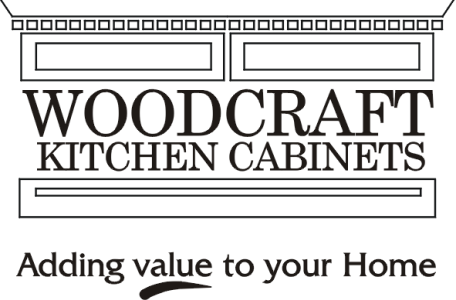Environmental Effects
Structural Settling
∙ Dust using a lint-free soft cloth, always in the direction of the grain
∙ Regular cleaning with a clean, damp cloth & dried immediately with clean dry cloth
∙ Avoid use of detergents, abrasives or self-polishing waxes on cabinet surfaces
∙ Remove stubborn stains by use of mild detergent or soap and very little water.
∙ Avoid excess moisture, dry off any water immediately using lint-free cloth
∙ Avoid application of steam from kettles, coffee makers & kitchen appliances
∙ Avoid standing on, leaning against shelves, drawers or open doors
∙ Maintain a comfortable & constant level of temperature & humidity to ensure long life of cabinets. All fine wood products are best maintained at temps of 20-23 degrees Celsius & 45% relative humidity.
∙ Exposure to strong light sources will affect the colors of the finishes
∙ Regular cleaning with a clean, damp cloth & dried immediately with clean dry cloth
∙ Avoid exceeding 15 lbs per square foot on cabinet drawers and shelves. Cabinets are tested and certified to a specific shelf load.
∙Water or other liquids allowed to sit on the surface for prolonged periods of time may cause staining or bubbling.
∙ Regular cleaning with a clean, damp cloth & dried immediately with clean dry cloth
∙ Avoid concentration of water or wet towels at counter-top joints and seams
∙ Excessive water standing in seams may cause glue failure and lamination separation
∙ Simple cleaning. Wipe up these counters with a clean, soft cloth for basic, everyday cleaning. This will help remove surface dust and dirt without damaging finish.
∙ Tough stains. Mild household cleaners generally work very well on getting stains out. Avoid using harsh abrasive cleansers. Do not use abrasive sponges or steel wool on laminates. For really bad stains, create a paste out of baking soda and water. Blot this up rather than scrubbing and scraping. Take care to wipe up spills as quickly as possible as laminates can stain permanently.
∙ Never place hot pots or dishes directly from the oven or burner on an unprotected laminate surface; such extreme heat can cause cracking or blistering. As a rule, a maintained temperature of 285°F can discolor a laminate. Contact adhesives typically can be reactivated or soften at around 200°F, which will allow the laminate to pull loose.
∙ Avoid cuts. Make sure not to cut directly on the surface of laminate counters. Use cutting boards, stones or plates instead to protect the finish and surface of the counters. This practice is required for just about every counter top out there. Using the right cutting techniques not only protects the counters, it also protects the knives.
∙ Never let water or any other liquid sit on the surface of the countertop. Although the laminate is water resistant, it is not waterproof. After cleaning or wiping down the counter, it is equally important to wipe it down with a cloth to dry the surface. Any joints or finished ends are highly susceptible to water damage as they are a point of entry. Avoid locating coffee makers, steamers or other appliances that use water on or near a seam. Water damage on the joints of countertops will result in an uneven joint, as the water will have caused the substrate material to expand creating an undulating surface.
∙ Don’t use harsh chemicals. Harsh chemicals that have acid in the mix do not go well with laminates. Avoid using drain unclogging agents, metal cleaners, ceramic cleaners rust and lime removers and even vinegar and water on or near these counters. Wipe up any spills immediately with water, and dry thoroughly afterwards.
High humidity can warp wood, low humidity can cause shrinkage or cracking. The recommended average residential relative humidity level is between 35% and 45%. This range will provide the best comfort for your family, while helping to protect your kitchen cabinets, musical instruments, drywall, wooden furniture and other belongings or materials from the damaging effects of dryness or excessive moisture.
∙ Natural sunlight contains Ultra Violet (UV) light rays that may affect the appearance of cabinets. According to the American Society of Testing Materials (ASTM) standards, the actual results in a home will vary depending on these three factors:
∙ Exposure to light (for example, direct from the south, east or west, or indirect from the north)
∙ The portion of the cabinet that receives the light (top, base, etc.)
The wood itself. The finish does not change color, the wood itself will.
Generally, Maple is more susceptible to changes than Oak because it is lighter.
Maple’s natural colour variation is from nearly white to slightly reddish brown, whereas Oak varies from brown to very dark brown.
∙ When your new house is being built the structural members and various materials are fitted in place to suit the requirements which exist at the time of construction. Once the house is completed it will start to settle as well during the heating months, particularly in the first year following construction, the home experiences a great deal of shrinking as the construction materials dry out and settle. This is a natural occurrence and should be expected by the homeowner. Conversely, as the weather warms, the gaps close up again.
∙ The settling and weather expansion may cause structural changes in the house. Structural changes in the building may result in changes in your cabinets and/or counter tops — cabinet doors may go out of adjustment, or caulked joints may separate.
∙ A quick and easy remedy to fix this situation is to remove the existing caulking material and apply a new bead where separation occurs. Where doors become misaligned a simple manual adjustment of the door is all that is required.


